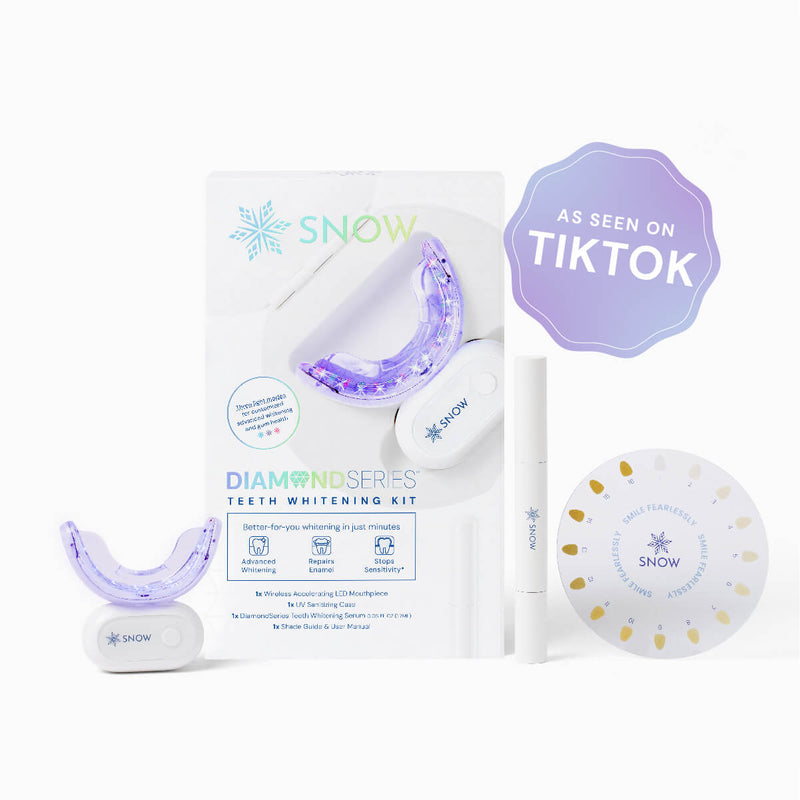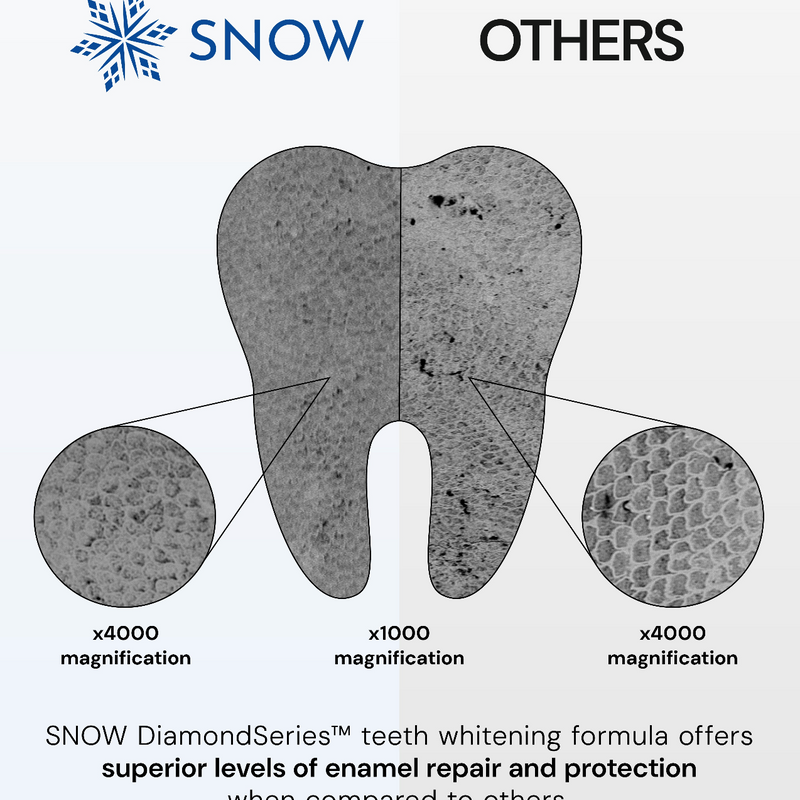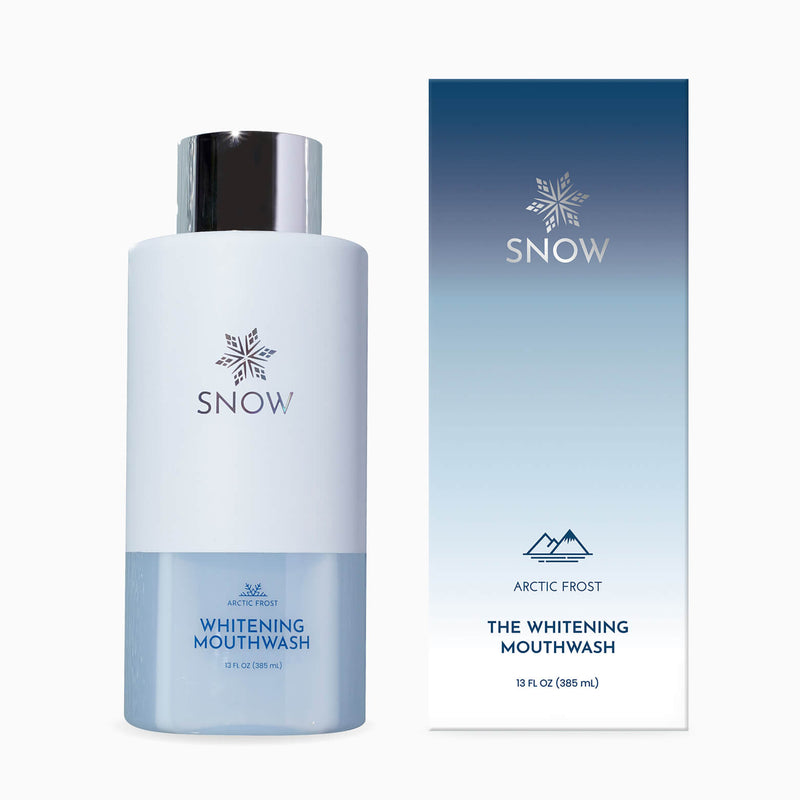Ever wondered what's behind that dazzling white smile after using teeth whitening products? Well, today, we're going to explore the world of teeth whitening ingredients. From common active ingredients to natural alternatives, we'll uncover what makes your smile shine.
What this article covers:- Common Active Ingredients in Teeth Whitening Products
- Natural Teeth Whitening Ingredients
- Safety of Teeth Whitening Ingredients
- Safe At-Home Tooth Whitening Options
Common Active Ingredients in Teeth Whitening Products
Let's take a journey into the world of teeth whitening ingredients. It's a bit like stepping into a science lab, but don't worry; we'll guide you through it.
The Power Of Peroxide
First up, we have the star of the show: hydrogen peroxide. This powerful bleaching agent is like the superhero of teeth whitening. It swoops in, penetrates the enamel, and breaks down those pesky discolored molecules, causing your teeth to look less than pearly white.

But is teeth whitening harmful? Well, like any superhero, hydrogen peroxide needs to be used responsibly. When used correctly, it's a safe and effective way to whiten your teeth. But if overused, it can cause tooth sensitivity and gum irritation. So, remember, with great whitening power comes great responsibility!
The Light Side Of Whitening
Next, let's shine a light on another aspect of teeth-whitening ingredients—literally! If you've ever wondered, "What does the light do for teeth whitening?" You're not alone. A light or laser is often used in professional settings to speed up the whitening process. It's like giving hydrogen peroxide a little boost, helping it work faster and more effectively.
Carbamide Peroxide: The Gentle Giant
Another common ingredient you'll find in teeth-whitening products is carbamide peroxide. Think of it as hydrogen peroxide's gentler cousin. It breaks down into hydrogen peroxide and urea when it comes into contact with water, providing a slower release of the bleaching agent. This makes it less likely to cause sensitivity, which is excellent news for those of us with sensitive teeth.
But just like with hydrogen peroxide, it's vital to use carbamide peroxide responsibly. Can you over-whiten your teeth? The answer is yes. Overusing any whitening product can lead to tooth sensitivity and enamel damage. So, following the product instructions and listening to your teeth is always best!
LED Teeth Whitening: A Bright Idea?
Finally, let's talk about LED teeth whitening. This high-tech approach to teeth whitening uses light to speed up the whitening process, similar to professional treatments. But is LED teeth whitening safe? Generally, yes, when used as directed. But you should always consult a dental professional before starting any new whitening regimen.

So, there you have it - a peek into the world of teeth-whitening ingredients. Whether it's the powerful action of hydrogen peroxide, the gentle touch of carbamide peroxide, or the high-tech approach of LED whitening, there's a whole world of science behind that dazzling white smile.
Natural Teeth Whitening Ingredients
Now, let's take a detour off the beaten path and venture into the world of natural teeth whitening ingredients. It's like stepping into a lush, green forest full of natural wonders and hidden treasures.
Activated Charcoal: The Dark Knight Of Teeth Whitening
First up, we have activated charcoal. We know what you're thinking: "You want me to put what on my teeth?" But hear us out. Activated charcoal is different from the stuff you use to fire up your barbecue. It's a specially processed form of charcoal that's highly porous and adsorbent.
Here's how it works: the activated charcoal binds to everything in its path, including the surface stains on your teeth. It's like a magnet, attracting and absorbing the stains and then whisking them away when you rinse.
After trying out this product, we found that while it can help remove surface stains, it's not as effective at whitening as this clean teeth whitening kit. But if you're looking for a natural alternative, it's worth a try.
Coconut Oil: Not Just For Cooking Anymore
Next, let's talk about coconut oil. This versatile oil is used for everything from cooking to skincare, and yes, even teeth whitening. The process is called oil pulling, and it involves swishing a tablespoon of oil in your mouth for about 15-20 minutes.
The idea is that the oil pulls out the bacteria and toxins from your mouth, leading to healthier gums and whiter teeth. While it's less immediately effective than a foam teeth whitening product or powder for teeth, it can be a great addition to your overall oral hygiene routine.
Baking Soda: The Pantry Staple With A Punch
Finally, we have baking soda, a common teeth-whitening ingredient you probably have in your pantry right now. Baking soda is a mild abrasive you can use with a teeth whitening electric toothbrush to scrub away surface stains on your teeth. Plus, it's alkaline, so it can help balance the pH in your mouth and fight off acid-loving bacteria.
So, there you have it - a journey into the world of natural teeth whitening ingredients. Whether you're a fan of activated charcoal, a devotee of coconut oil, a baking soda believer, or just curious about lesser known remedies like aluminum foil teeth whitening, there's a natural solution out there for you. Just remember, natural doesn't always mean more effective, so finding the right balance that works for you and your smile is essential!

Safety of Teeth Whitening Ingredients
Safety is a top priority when it comes to teeth whitening. So, are teeth whitening kits safe? Most are when used as directed. But it's important to be aware of the pros and cons of laser teeth whitening and other methods for whitening your teeth.
Some products use a purple dye to counteract yellow tones, but does purple dye whiten teeth? Not exactly. It can make teeth appear whiter by neutralizing yellow tones, but it doesn't actually remove stains.
For those with sensitive teeth, non-sensitive teeth whitening options are available. And as always, it's important to be aware of teeth whitening ingredients to avoid, like chlorine dioxide, which can damage enamel.
Safe At-Home Tooth Whitening Options
Maintaining a bright smile at home is easier than ever with a range of safe and effective teeth whitening products. White strips for teeth are a convenient option, and a mouthwash for teeth whitening can quickly and easily boost your daily oral hygiene routine. After putting it to the test, we found that these products help maintain a bright smile and promote overall oral health.
Conclusion
Understanding the ingredients in teeth whitening products is vital to achieving a safe and effective whitening result. With the help of SNOW's advanced DIY teeth whitening solutions, you can have the bright, healthy smile you've always dreamed of in the comfort of your own home.
Did you find the blog beneficial? If so, consider exploring our other guides.
- Does Hydroxyapatite Whiten Teeth
- White Vinegar And Baking Soda To Whiten Teeth
- Can You Whiten a Root Canal Tooth?
- Can Stained Teeth Be Whitened?
- How to Whiten Temporary Acrylic Teeth
- Teeth Whitening for Tanning Beds
- Teeth Whitening for Crowns and Veneers
- Best Teeth Whitening for Crooked Teeth Products
- Teeth Whitening for Over 60s (Turn Back Time)
- Teeth Whitening for Periodontal Disease
- Are Yellow Teeth Healthy?
- Are Yellow Teeth Stronger?
- Can I Chew Gum After Teeth Whitening?
- Can I Eat Ice Cream After Teeth Whitening?
- Can I Eat Butter After Teeth Whitening?


























